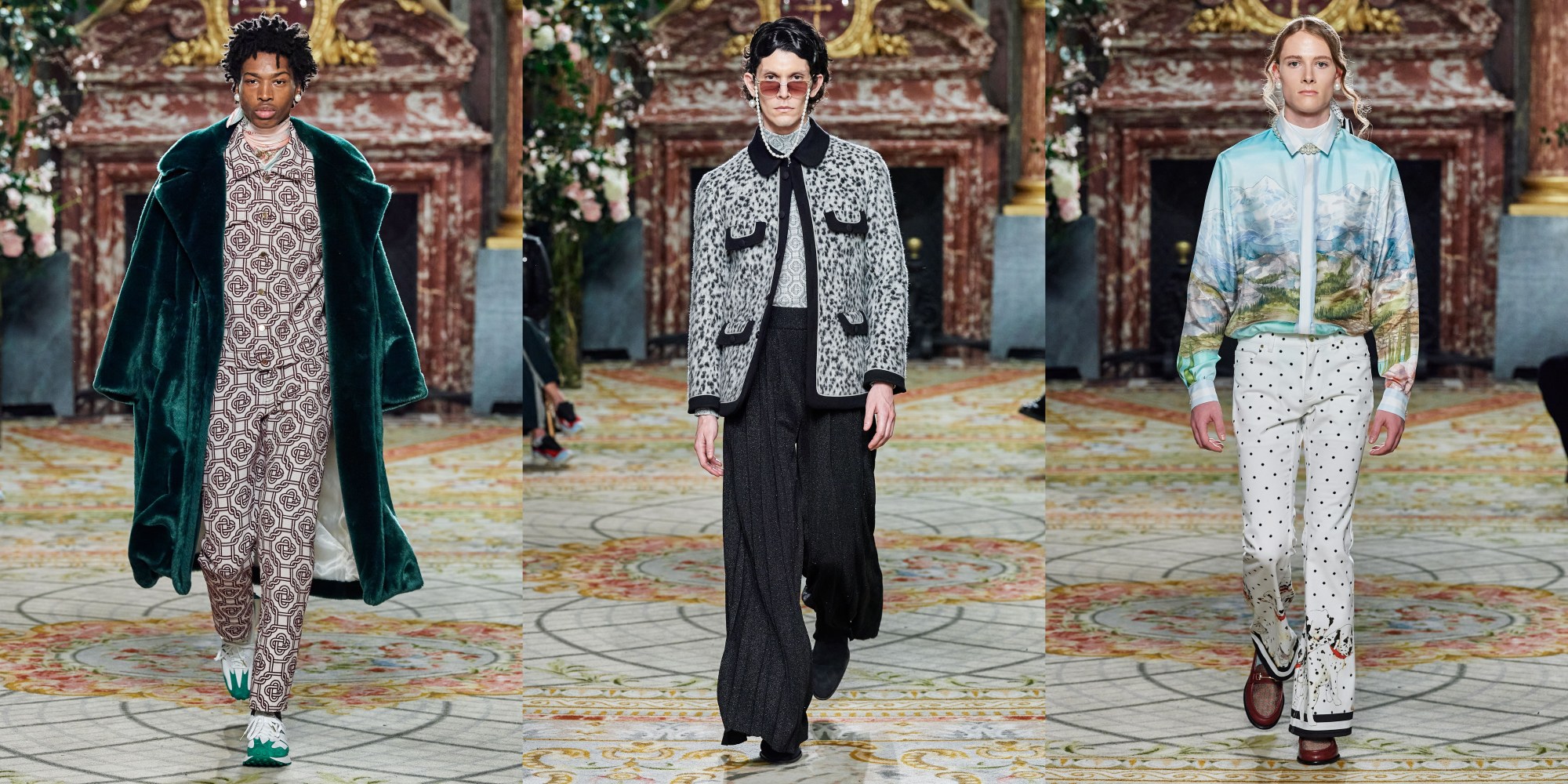“If you could link it to a sport, it would be tennis. And to a genre of music, bossa nova,” says Charaf Tajer, ‘it’ being his LVMH Prize finalist menswear brand, Casablanca. On the surface, they’re references to disparate worlds, each belonging to its particular sphere of nostalgia — the languid nights in Rio’s Zona Sul in the 60s, and the prim country club respectively. What they do share, though, is a sense of idealism, embodying a leisurely standard of living to which so many of us aspire.
It’s a take on life that Charaf shares — ‘Idealism’, incidentally, was the title of the brand’s AW20 collection, a print-heavy ode to life around Italy’s northern lakes. “It was referencing that there are the Impressionists, the Surrealists, and that we want to position ourselves as the Idealists,” he says. “In a world where people are perhaps losing hope, we can sometimes forget how beautiful it is. We want to remind people, ourselves included, to look at things with fresh eyes, and I think that bossa nova, tennis and Casablanca all allow us to do that.”
The lighthearted comparisons Charaf draws with painting movements is fitting, given that the collection’s January presentation on the Paris menswear schedule opened with a handful of hand-painted mise-en-scène prints — think poised dalmatians and clear alpine vistas — on fine knit wool sweaters and amply cut silk shirts. This air of Lake Garda glitz also translated, somewhat more figuratively, to interlocking motifs on jackets, coats and trousers, recalling the sort of pattern you might find on the tiles of a lakeside villa’s foyer. Homage was paid to the region’s craft heritage, too, through white cable knit outfits with embroidered stripes, or sharp suits in sober black or stracciatella wool, all with contrasting button plackets.
Aesthetically, Casablanca’s proposal is rigorous, with each collection offering wearable talismans for lifestyles that, for most of us, only exist in our dreams. And for a brand that only showed its first collection on the Paris schedule back in AW19, the refinement of his vision is certainly worth noting. That is, however, in large part down to Charaf’s industry pedigree — he was a founding member of luxe streetwear outfitters Pigalle, as well as an Off-White collaborator. Casablanca, though, marks his most comprehensive creative output yet. To learn more about the philosophy behind one of Paris’ most exciting new menswear brands, we caught up with the designer over Zoom.

Two cities that are central to the brand are Paris and the brand’s Morrocan namesake. There’s even a sentence on your site that reads ‘Designed in Paris and made in Casablanca’. How do they come through in your work?
What inspires me most about Casablanca is the way I saw people living as if it were the last day of their lives — wearing the best prints they could, riding motorcycles without helmets — there’s a real sense of freedom. Paris is really my base. It’s where I was born, and it’s where I’ve spent the most time in my life.
The brand isn’t just about those places, though. Casablanca, for example, is perhaps where I started my journey, as my parents met there, but it’s not where I’m headed. AW20 was about a lake in northern Italy, SS20 was about Brazil, the next collection will be about somewhere else. But just the word itself, ‘Casablanca’, has a kind of romantic feel to it that I wanted to incorporate from the beginning.
For sure, it really conjures up ideas of the golden age of travel, which seems to be the lens through which you then look at other places. How would you describe the role of the fantasy of travel in your work?
I think it’s the driving purpose. When I was younger, I used to buy a lot of Lacoste. I’m from Paris and I’m North African, so it was part of the culture. Lately, though, I realised that I wasn’t buying it for the crocodile logo or for the polo itself, but rather for the opportunity to open a window in my mind. These items were linked to tennis, and weren’t necessarily made with people like me in mind, but we took them, made them our own, and became a part of that world. It was a physical object that made me believe that maybe, somehow, the dream I had of playing at the French Open and being someone of that world, could become a reality. This sort of fantasy is important to any brand, but with Casablanca, it’s the essence — it’s about the fantasy of travel, the fantasy of a better life.
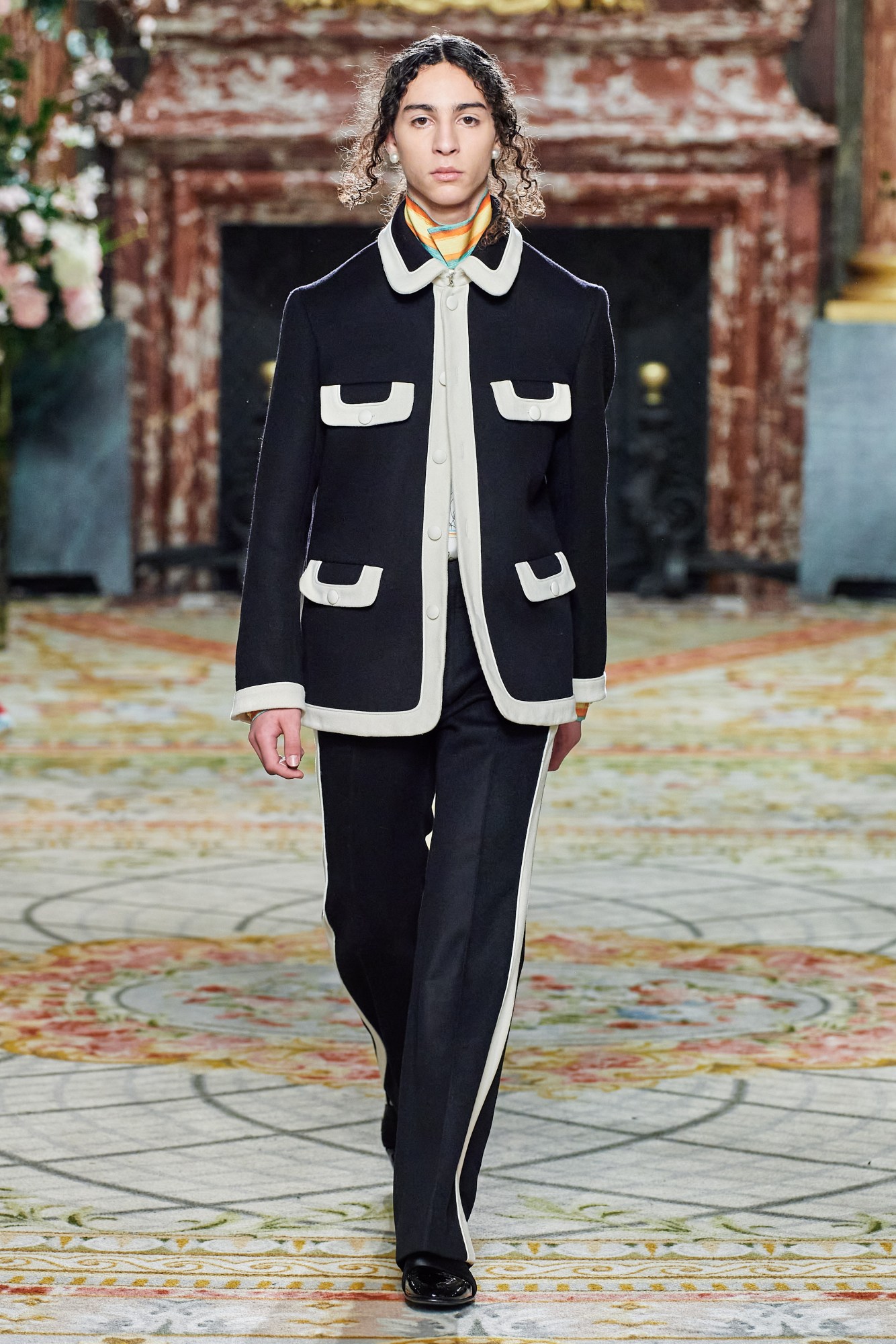
Fantasy may play a central role, but the end result is always very believable.
Yes, it’s very concrete, I really try to ensure it’s not at all abstract.
Do you think that your work at Pigalle, and your collaborations with brands like Off-White, has informed that attitude?
Absolutely, yes. When I was way younger, I used to help backstage at Rick Owens. My best friend’s mother did the production for the shows. What struck me was how something that looked as extreme as Rick Owens, so unusual to wear, could achieve that level of success. It taught me that no matter how extreme your aesthetic is, as long as you bring it to the physical world in a very clear way, certain people will follow you and understand your vision.
Menswear has traditionally had a reputation for rigidity, catering to a fixed understanding of masculinity and masculine dressing. Recently, though, we’ve seen a new crop of designers reintroducing beauty, softness, and sensuality to the genre — particularly in Paris, with designers like Ludovic de Saint Sernin. How do you position yourself with regard to this movement?
I just had a phone call meeting a few hours ago, and I was talking about Ludovic and how much I love his work. His approach is more extreme than mine, in a sense, but I love how he brings femininity and sensuality into menswear. It’s a beautiful movement, and I think it’s a way of showing that softness isn’t weakness. Perhaps it’s a subconscious reaction to this culture of male toughness exemplified by people like Trump and Bolsonaro, a desire to show that men can be soft, sweet, perhaps a bit colourful, and still be men.
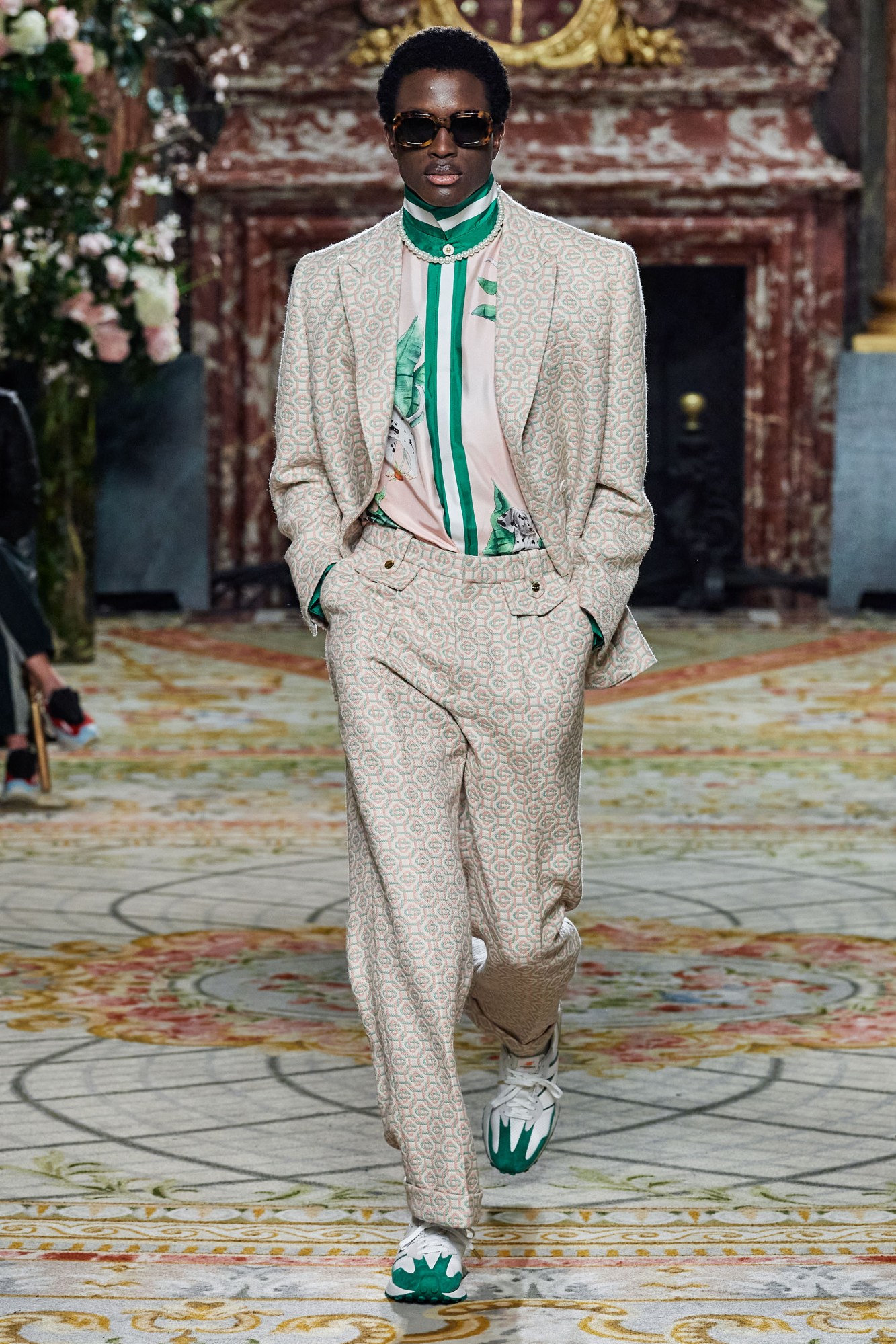
You’ve previously spoken of your admiration for France’s heritage houses. Which is clear when you look at pieces like the pipe-pocketed wool suits, which call Chanel to mind.
For sure, it’s obviously a reference to the house, and perhaps an attempt to position ourselves as a disciple of a certain aesthetic. Personally, I believe there was the time of the ‘school of cool’ and now we’re coming back to the ‘school of beauty’. You know… Chanel, Hermès, Saint Laurent.
At Casablanca, we see ourselves as part of that. I think the school of cool belongs to something more rebellious, more adolescent — something you see with many streetwear brands. But adolescence has to end at some point — we say ‘fuck you’ to our parents when we’re young, and then we become more like them as we grow older.
Speaking of more institutional presences in the industry, you were recently acknowledged by the biggest of them all. How did you feel about making the final of the LVMH Prize?
It’s absolutely fantastic, and such an honour. Just being associated with the name LVMH, the biggest institution in fashion, is already a victory. Meeting all those people, the journalists, the designers that we all look up to — all of that was such a fantastic experience, and the gratitude that I feel is immense.
You’ve also just launched a collaboration with New Balance. With sneaker collaborations now so regular, how did you ensure that it would stand out?
Well, we just put 100% of our efforts into the design, before thinking about how we would market it. We wanted to make something that could be worn by a grandpa as convincingly as by a young man — something quite timeless. One of the most important things for us is to create things that people who don’t care about fashion love, just for what they are. We care about the product itself, and want people to appreciate it irrespective of all the noise around it.
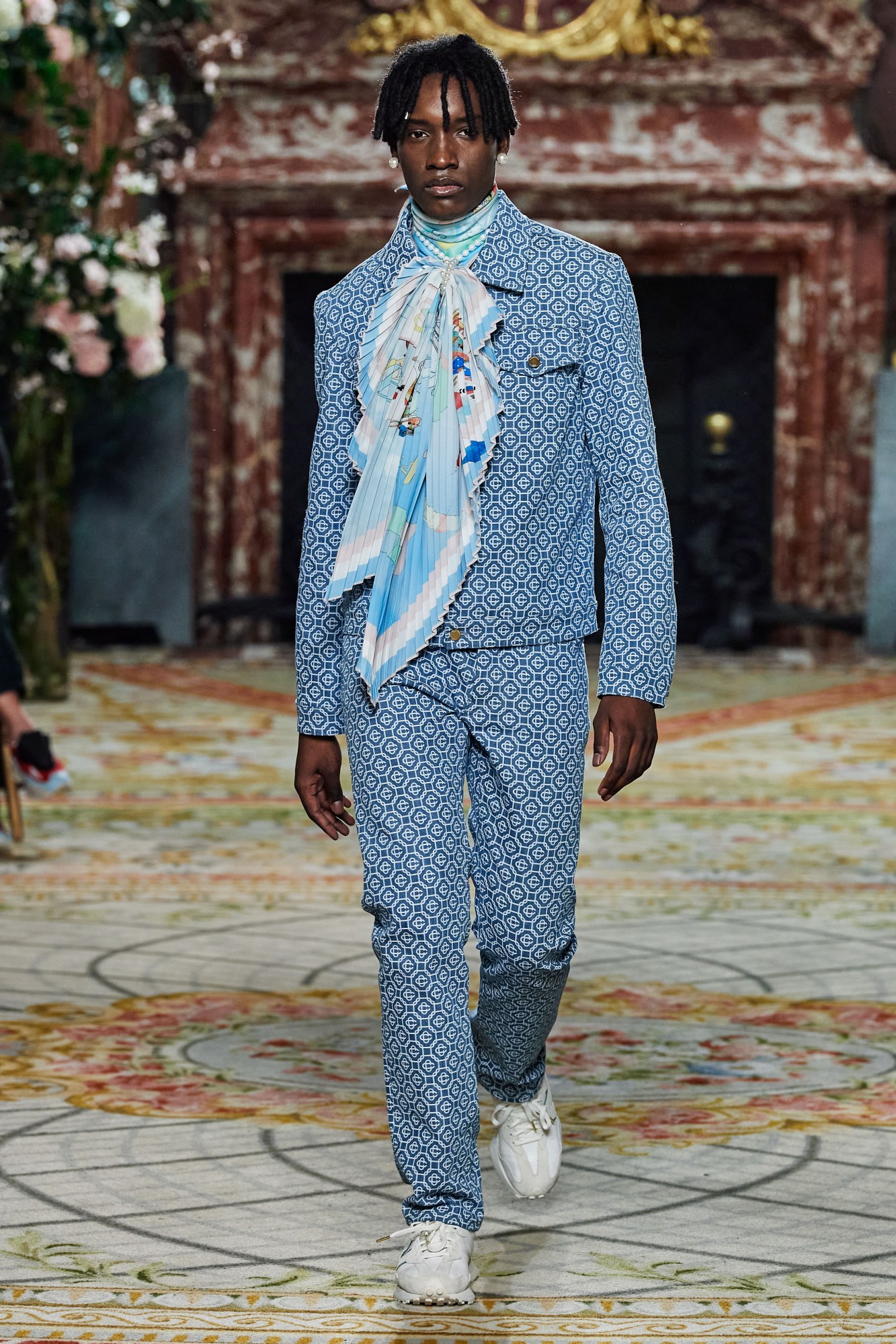
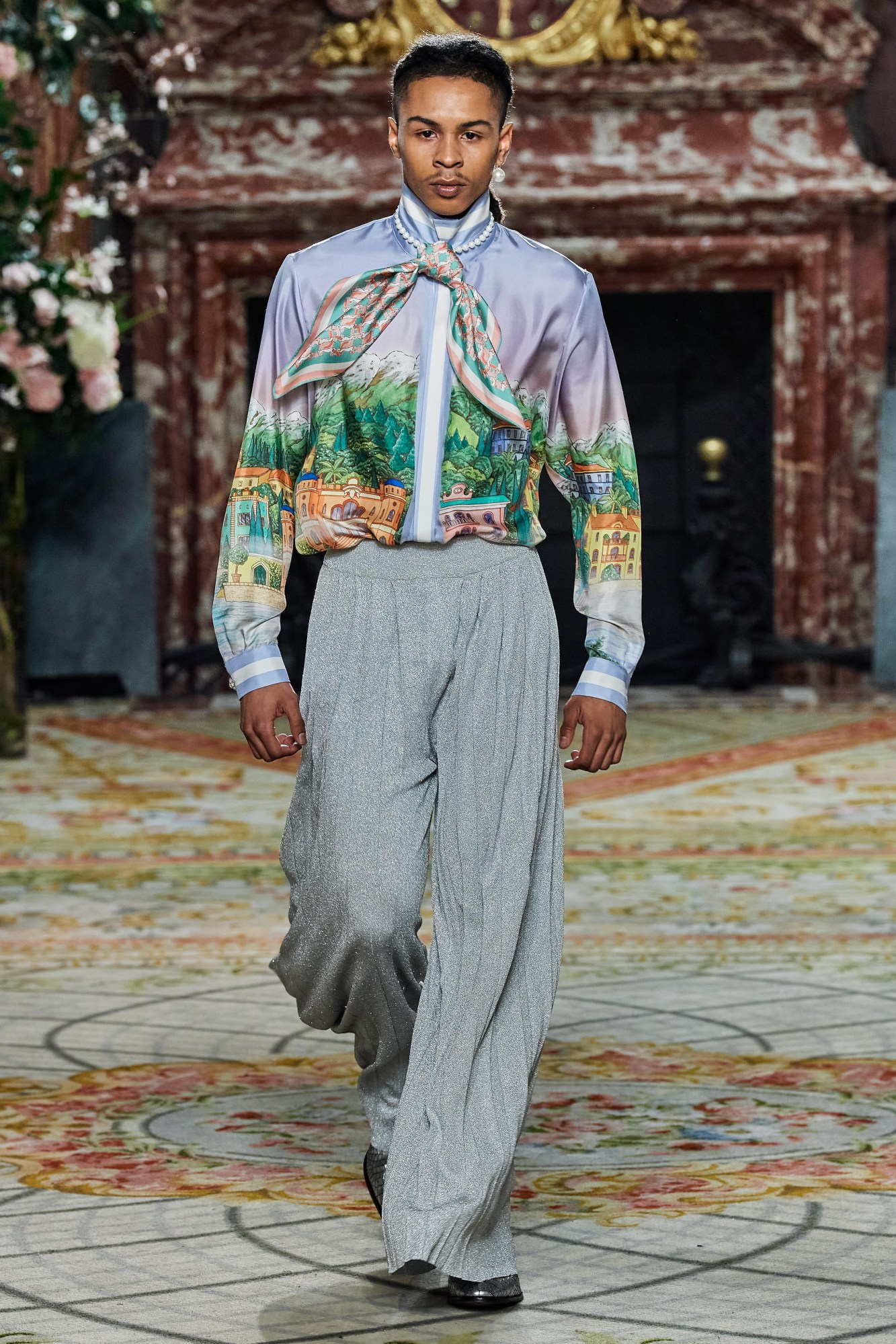
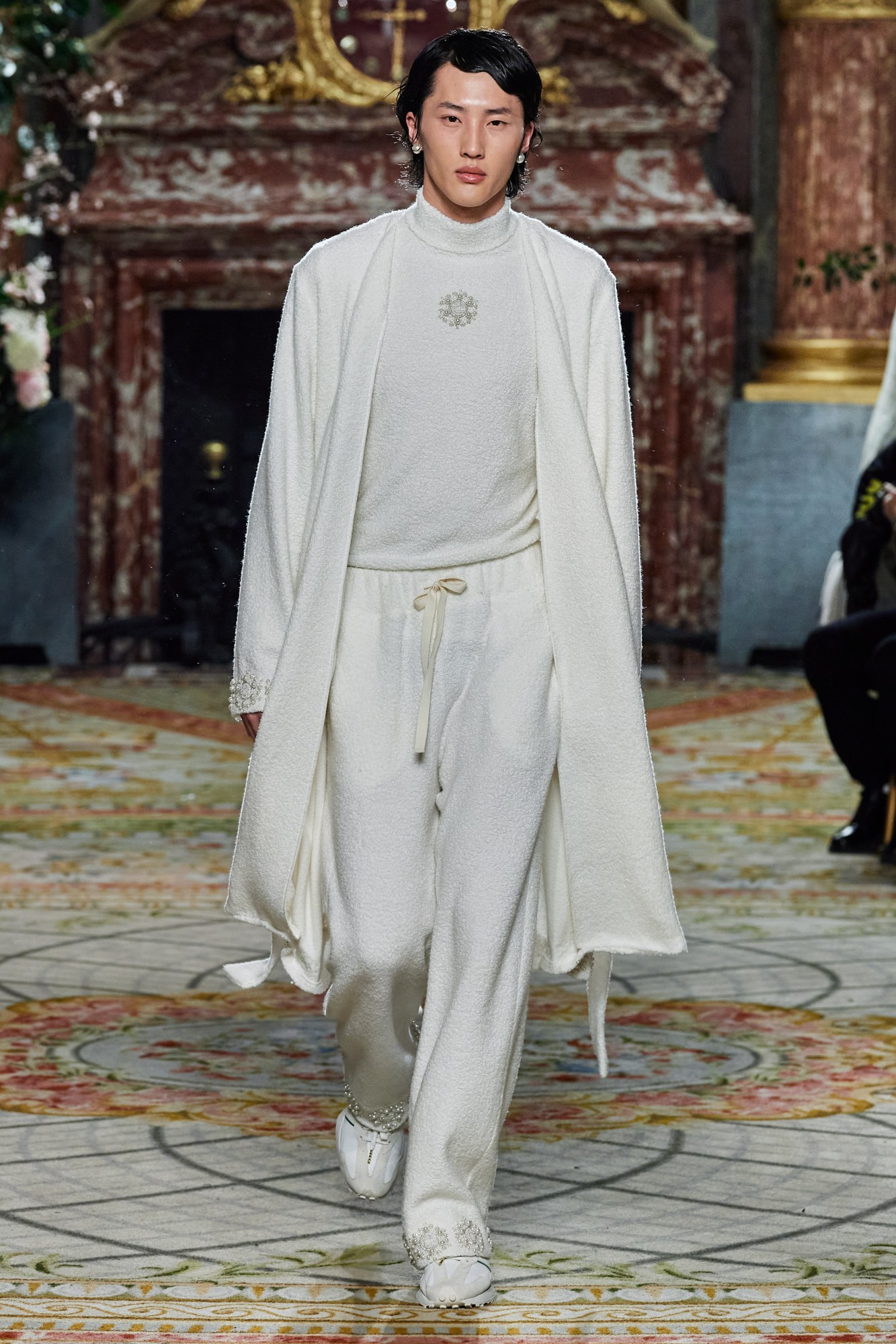
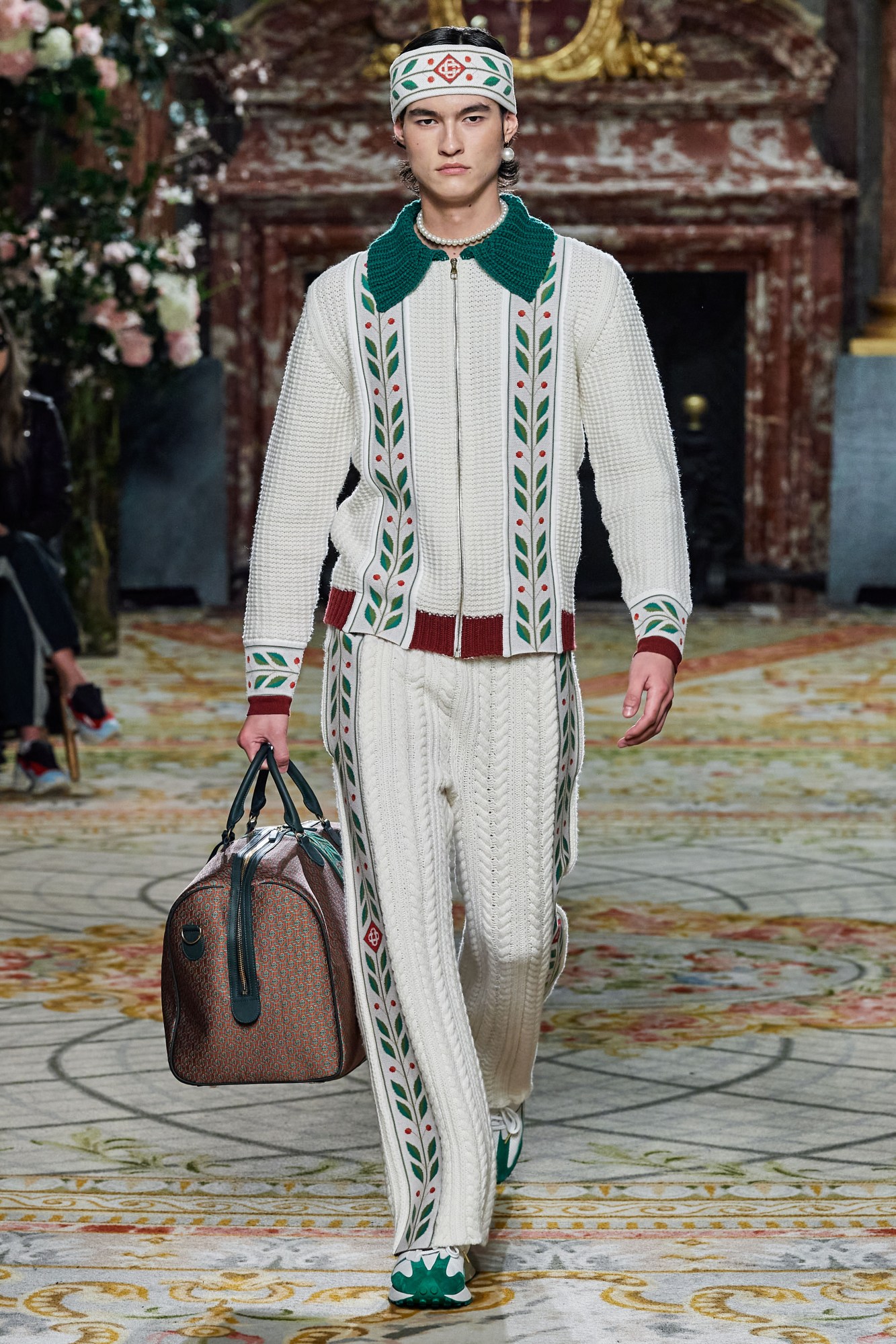

Credits
All imagery via Casablanca
